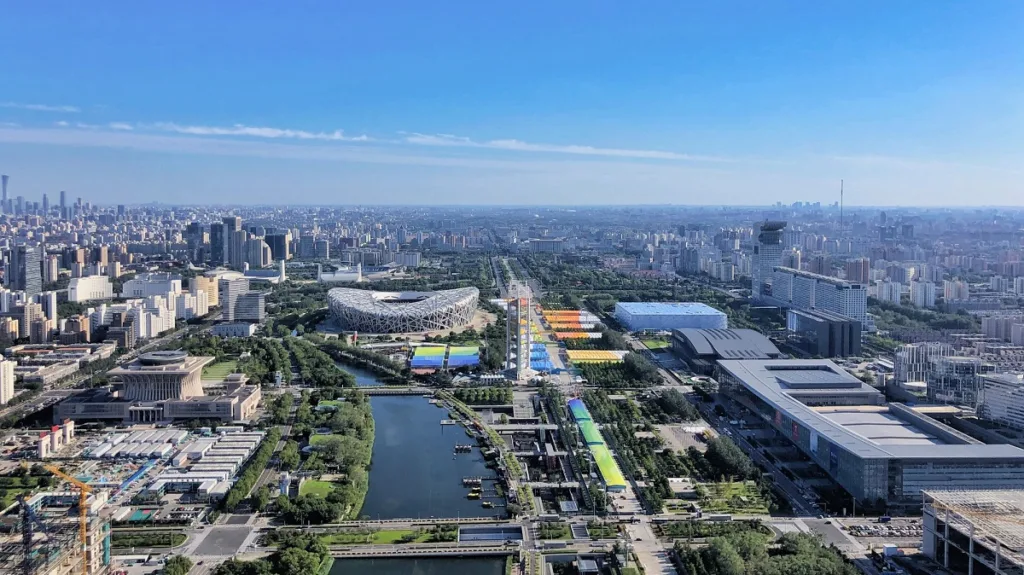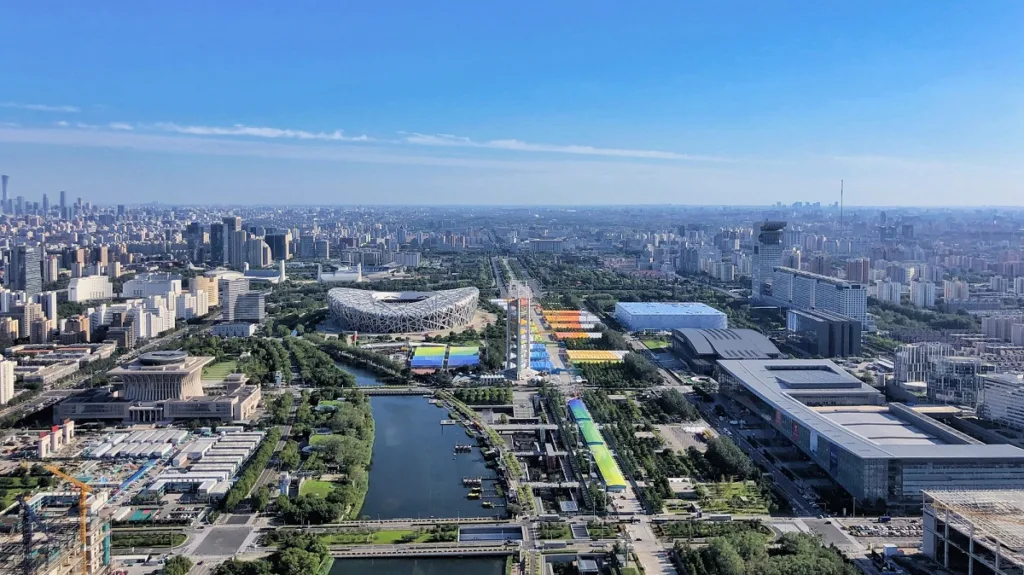Dragon-shaped river in Beijing


Nestled within the heart of Beijing‘s Olympic Forest Park lies a captivating marvel of cultural symbolism and modern urban engineering – the Dragon-shaped River. This remarkable water system seamlessly blends traditional Chinese iconography with contemporary design, creating a mesmerizing landscape that embodies the rich heritage of the region while embracing the spirit of innovation. As one of Asia’s largest urban artificial waterways, the Dragon-shaped River serves as a testament to the meticulous planning and visionary ambition that defined the 29th Beijing Olympics in 2008.
Design and Symbolism: The Dragon-shaped River ingeniously incorporates one of the most revered and sacred symbols in Chinese culture – the dragon. Meandering through the Olympic Forest Park, the river’s open mouth faces the Qing River, while its tail wraps around the National Stadium. This design not only showcases elements of Chinese tradition but also echoes the water systems of ancient Beijing, creating a harmonious blend of cultural heritage and natural landscape.
Location and Scale: Situated in the central area of the Beijing Olympic Forest Park, the Dragon-shaped River is the largest urban artificial water system in Asia. Spanning across North National Stadium Road, Datun Road, Datun North Road, Ke Hui South Road, and Ke Hui Road, it stretches for 2.7 kilometers with a water surface width ranging from 20 meters to 125 meters, covering a total water area of 183,000 square meters.
Ecology and Functionality: Serving as the “water axis system” and a key landscape feature of the Beijing Olympic Park, the Dragon-shaped River emphasizes the natural attributes of rivers and highlights the material and nutrient exchange between water and soil. It encourages people to engage with water, fostering a closer connection with nature. Moreover, the river plays a role in environmental regulation, injecting vitality into the entire central area.
Olympic Legacy and Influence: The Dragon-shaped River was a significant engineering project for the 29th Beijing Olympics in 2008. Surrounded by iconic venues such as the Bird’s Nest, Water Cube, National Stadium, and National Convention Center, it attracted a large number of domestic and international tourists. Serving as an Olympic legacy, the river not only represents the image of the Beijing Olympics but also serves as a window to showcase Chinese culture and modern urban planning.
History and Challenges: While the Dragon-shaped River faced challenges such as eutrophication in the past, effective management and maintenance have led to significant improvements in its ecological environment. In recent years, the river has also hosted various winter activities such as ice skating carnivals, aiming to continuously engage the public in winter sports.